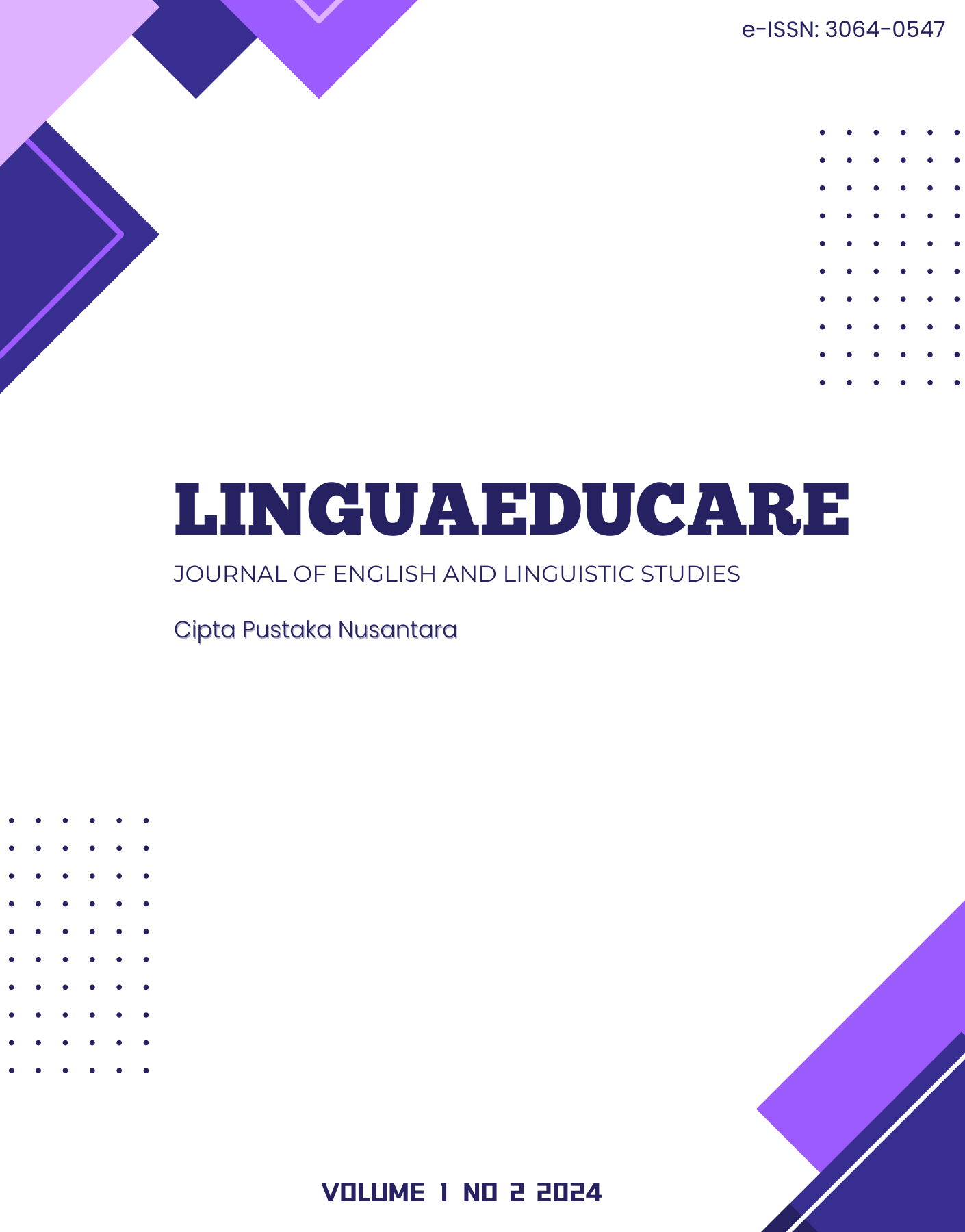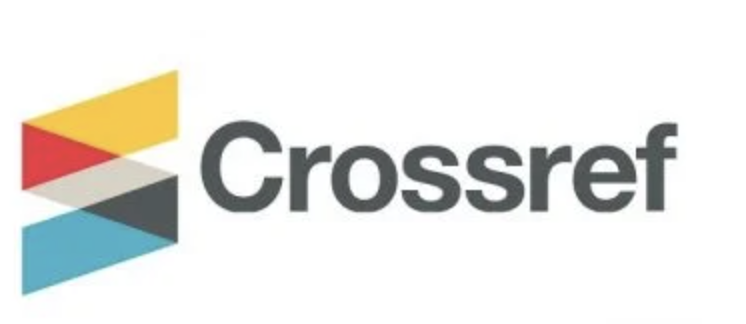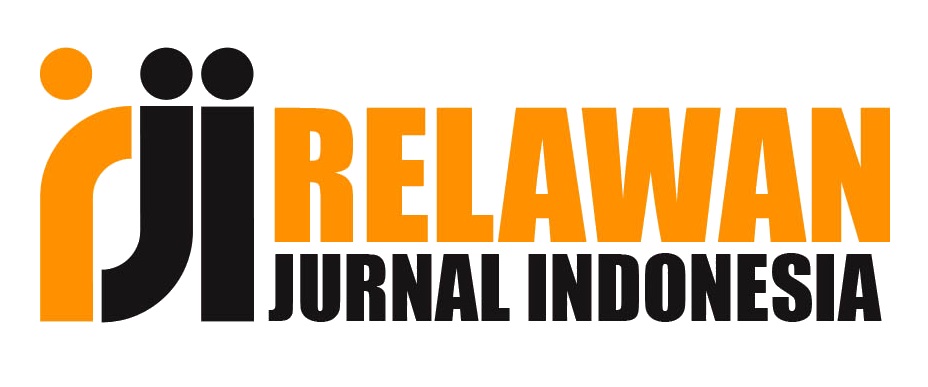Enhancing Students' Reading Comprehension through Reciprocal Questioning
DOI:
https://doi.org/10.63324/lec.1v.2i.10Keywords:
experimental research, narrative text, Reciprocal Questioning, reading comprehensionAbstract
Reading has been very challenging for students especially when its position is as a foreign language. During the researchers’ observation, it was found that students’ reading scores at SMA Muhammadiyah Pagaralam are still below the standard passing score. The students expressed that it was hard for them to comprehend the reading due to their lack of vocabulary and the text was a bit difficult to understand. This study offered a method called reciprocal questioning (REQUEST) to solve that problem. This study aimed at finding out whether there was a significant difference in reading comprehension of the narrative text between the 10th-grade students of SMA Muhammadiyah Pagaralam who were taught by using the REQUEST strategy and those who were not. The method of this study is quantitative with a quasi-experiment design. Two classes were used out of six for experiment and control classes. Pre-test and post-test were used as data collection and distributed to the students in both experiment and control classes. The sample was chosen purposely non-random. Paired sample t-test and independent t-test were used to analyze the data through SPSS 22. The result of this study indicated that there was a significant difference in students’ reading comprehension.
References
Duke, N. K., Pearson, P. D., Strachan, S. L., & Billman, A. K. (2011). Essential elements of fostering and teaching reading comprehension. What research has to say about reading instruction, 4(1), 286-314.
Grabe, W., & Stoller, L. F. (2001). An investigation into the reading strategy use of EFL prep-class students. Procedia - Social and Behavioral Sciences, 27(1), 65-72. https://doi.org/10.1016/j.sbspro.2014.12.034
Hasbi, M. (2013). The attitudes of students from ESL and EFL countries to English. Register Journal, 6(1), 1-16. https://doi.org/10.18326/rgt.v6i1.1-16
Hasbi, M. (2017). Preparing digitally literate graduates through journal article reading-based activities. In: The 1st International Conference on English Language, Linguistics, and Literature (ICELLL 2017), 176-184. Institut Agama Islam Negeri Surakarta.
Hasbi, M. (2024). Technology-enhanced EFL activities for Gen Z students’ vocabulary building. In Hasbi, M., Islamiah, N., Astawa, N. L. P. N. S. P., Hamidah, F. N., Nor, H., Februati, B. M. N., Nisa, B., Sari, E. D. S., Yuliani, N. D., Sari, A. S., Tungka, N. F., Rahmah, M., Sata, M. R. M., Madkur, A., Fauzi, A. R., Rahmawati, O. 1., Purnami, I. A. O., Mulyani, Y. S., Lina, M. F., Dewi, R. F., Hastomo, T., Pricilia, G. M., Juhansar, Mandasari, B., Assiddiq, M. A., Nurohman, Ghufron, A. M., Amna, S., Naufal, M. R., Fajaria, N. H., & Wardani, E., How to Teach English to Gen Z Students (pp. 1-12). Rizquna. http://e-repository.perpus.iainsalatiga.ac.id/21482/
Hasbi, M., Alamsyah, A., Faozan, A., Astawa, N. L. P. N. S. P., Fauzi, A. R., Utomo, H. Y., Devi, A. P., Nor, H., Adimarta, T., Kristanto, Mandasari, B., Dewi, R. F., Nisa, B., Hartati, E., Pricilia, G. M., Saputra, R. M., Purnami, I. A. O., Nisa, I. K., Mangendre, Y., Nurohman, Fajaria, N. H., Amna, S., Ariawan, S., Widodo, J. S., Ghufron, A. M., Adzhani, S. A., Fadhilawati, D., Sari, A. S., Rejeki, S., & Rohqim, A. I. F. (2024). Useful AI Tools For English Teachers. Rizquna. http://e-repository.perpus.iainsalatiga.ac.id/21414
Hastomo, T., & Zulianti, H. (2022). The integration of the KWL (Know, Want, Learn) strategy and the Zoom conference in teaching reading: An action research. Linguists : Journal of Linguistics and Language Teaching, 8(1), 55–66. https://doi.org/10.29300/LING.V8I1.6574
Hastomo, T., Mandasari, B., & Widiati, U. (2024). Scrutinizing Indonesian pre-service teachers’ technological knowledge in utilizing AI-powered tools. Journal of Education and Learning (EduLearn), 18(4), 1572–1581. https://doi.org/10.11591/edulearn.v18i4.21644
Hill, W. R. (2000). Secondary school reading: Process, program, procedure. Chicago: University of Chicago Press.
Istiara, F., & Hastomo, T. (2023). The perception of elementary school teachers to online learning during the COVID-19: A case study. Jurnal Smart, 9(1), 1–14. https://doi.org/https://doi.org/10.52657/js.v9i1.1815
Knapp, K. (2015). English as an international lingua franca and the teaching of intercultural communication. Journal of English as a Lingua Franca, 4(1), 173-189. https://doi.org/10.1515/jelf-2015-0003
Manzo, A. V., & Casela, U. P. (2008). Teaching children to be literate: A reflective approach. New York: Holt, Rinehart, and Winston, Inc.
Mapiasse, S. Y., & Sihes, A. J. (2014). Evaluation of English as a foreign language and its curriculum in Indonesia: A review. English language teaching, 7(10), 113-121. https://eric.ed.gov/?id=EJ1075934
Mohammad, Z. A., & Hasbi, M. (2021). Reading difficulties in English as a second language in Grade Five at a Saint Patrick's High School for Boys, Hyderabad--India. Arab World English Journal, 12(4), 521-535. https://dx.doi.org/10.24093/awej/vol12no4.34
Oktarina, I. B., Saputri, M. E. E., Magdalena, B., Hastomo, T., & Maximilian, A. (2024). Leveraging ChatGPT to enhance students’ writing skills, engagement, and feedback literacy. Edelweiss Applied Science and Technology, 8(4), 2306–2319. https://doi.org/10.55214/25768484.v8i4.1600
Sapitri, R., & Amin, T. S. (2018). Applying reciprocal questioning (ReQuest) to improve students’ critical reading ability. Jurnal Studi Guru dan Pembelajaran 1(1), 57-62. https://doi.org/10.30605/jsgp.1.1.2018.24
Sari, A. S. (2019). Developing English grammar textbook for the students of General English Course (GEC) at Mahesa Institute Pare. Language-Edu, 8(1). https://jim.unisma.ac.id/index.php/LANG/article/view/2409
Sari, A. S., & Yuliana. (2022). Pengembangan modul bahasa Inggris untuk mahasiswa program studi matematika di STKIP Muhammadiyah Pagaralam. Jurnal Ilmiah KORPUS, 6(2), 143–154. https://doi.org/10.33369/jik.v6i2.23943
Sari, A. S., Fadilaturrahmah, F., Kalsum, U., Yuliana, Y., Juliansa, P. R., Putra, Y. S., & Tansilo, H. (2022). Pelatihan pembuatan video sebagai media pembelajaran menggunakan Kinemaster. Media Abdimas, 1(3), 41-45.
Sari, C. M., Zulianti, H., & Hastomo, T. (2023). Enhancing Students’ Writing Ability Using Clustering Methodology. Aksara: Jurnal Bahasa dan Sastra, 24(2), 600–610. http://dx.doi.org/10.23960%2Faksara%2Fv24i2.pp600-610
Setiyo, B., Maximillian, A., & Hastomo, T. (2023). Enhancing tenth-grade students’ reading comprehension via small group discussions on narrative texts. U-JET: Unila Journal of English Teaching, 12(2), 180–186. https://jurnal.fkip.unila.ac.id/index.php/123/article/view/28472
Snow, C. (2002). Reading for understanding: Toward an R&D program in reading comprehension. Santa Monica: Rand Corporation.
Staton, T. F. (2005). Primary national strategy: Understanding reading comprehension. Jaipur: Sunrise Publisher and Distributors.
Sujarwo, A., Setiyo, B., Suhendi, S., Istiara, F., & Hastomo, T. (2023). Enhancing Reading Comprehension through The Utilization of The Summarization Strategy. Jurnal Smart, 9(2), 131–145.
Waziana, W., Andewi, W., Hastomo, T., & Hasbi, M. (2024). Students’ perceptions about the impact of AI chatbots on their vocabulary and grammar in EFL writing. Register Journal, 17(2), 328–362. https://doi.org/10.18326/register.v17i2.352-382
Zulianti, H., & Hastomo, T. (2022). Partner Reading Strategy : An Effective Strategy for Improving Students’ Reading Comprehension. Premise: Journal of English Education and Applied Linguistics, 11(1), 175–188. https://doi.org/10.24127/PJ.V11I1.4435















